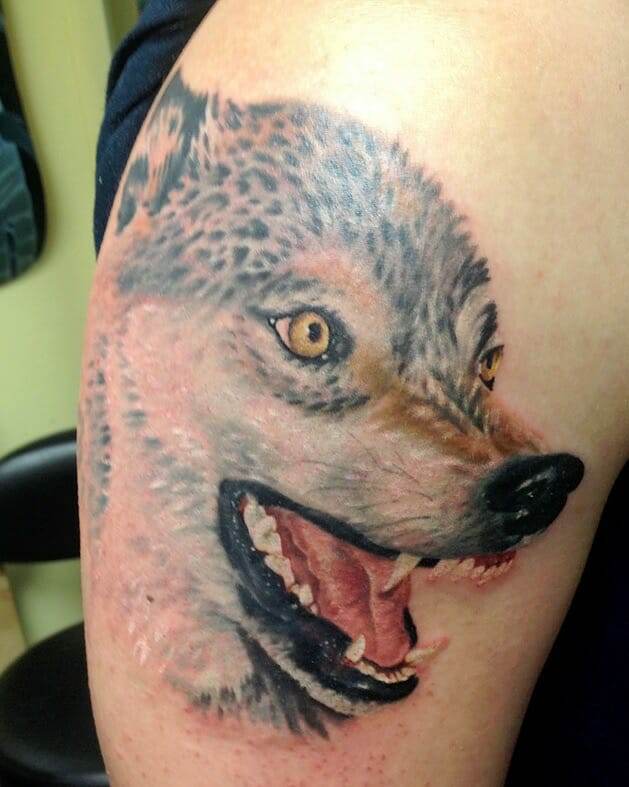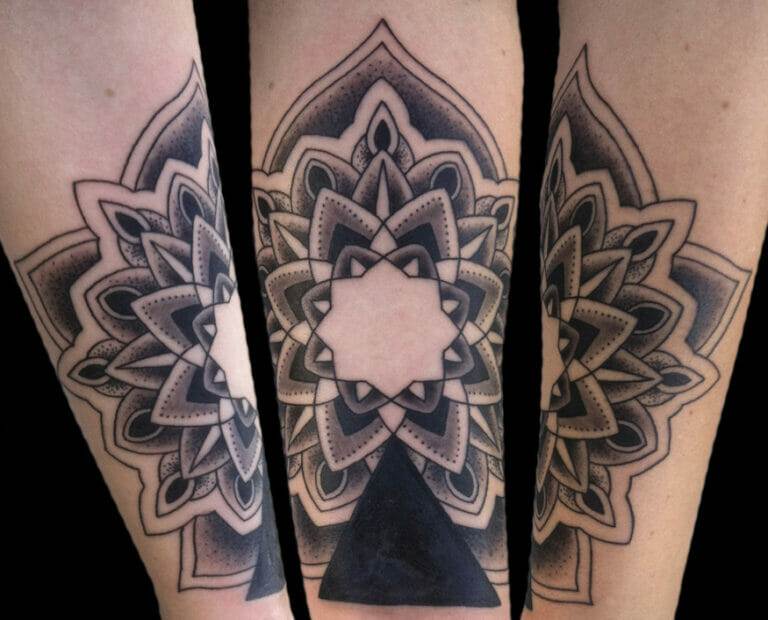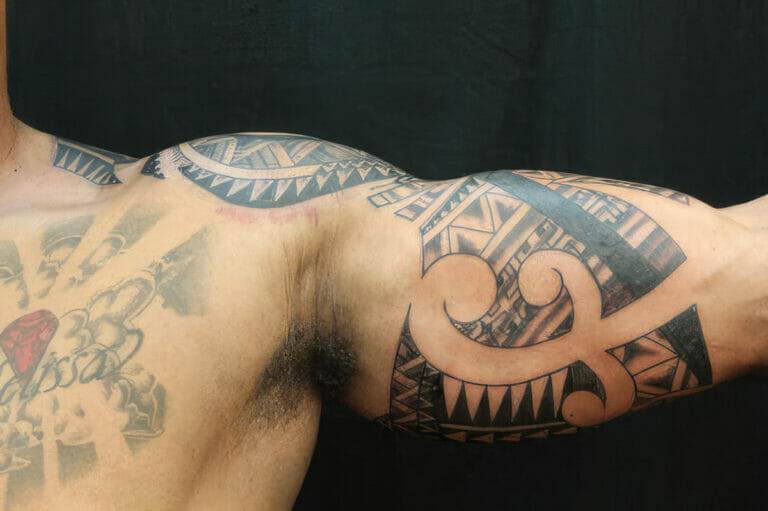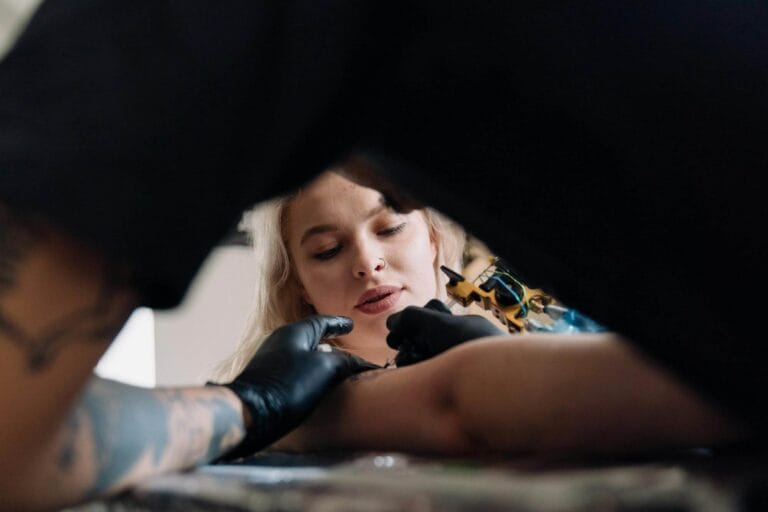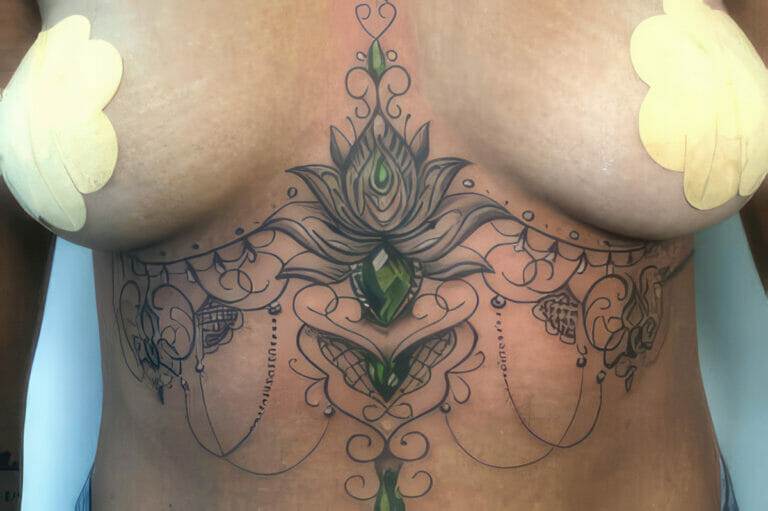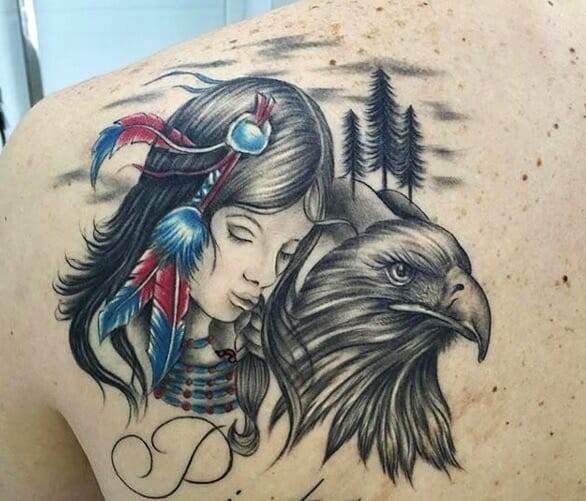
Illustrative tattoos have become increasingly popular in the tattoo industry, captivating both tattoo enthusiasts and artists alike. These tattoos are known for their intricate details, bold lines, and unique beauty. They often feature a wide range of subjects, from floral designs to animal portraits, and can be found in various styles such as realism, neo-traditional, and surrealism. The artistry and skill required to create illustrative tattoos make them a sought-after choice for those looking to express themselves through body art.
The Beauty of Illustrative Tattoos: A Closer Look
One of the most captivating aspects of illustrative tattoos is their unique beauty. These tattoos are characterized by their intricate details and bold lines, which create a visually stunning effect on the skin. The level of detail in illustrative tattoos is often astonishing, with artists using fine lines and shading techniques to bring their designs to life.
Floral designs are a popular choice for illustrative tattoos, as they allow artists to showcase their skills in creating intricate patterns and delicate petals. These tattoos often feature vibrant colors and realistic depictions of flowers, making them visually striking and aesthetically pleasing.
Animal portraits are another popular subject for illustrative tattoos. These tattoos capture the beauty and essence of various animals, from majestic lions to graceful birds. Artists use their skills to create realistic depictions of these creatures, paying close attention to details such as fur, feathers, and eyes.
The History of Illustrative Tattoos: From Ancient Times to Modern Day
The history of illustrative tattoos can be traced back to ancient times when they were used as a form of cultural expression and symbolism. In ancient Egypt, tattoos were seen as a way to honor the gods and protect the wearer from harm. These tattoos often featured intricate patterns and symbols that held deep meaning for the wearer.
In Japan, illustrative tattoos have a long history and are known as irezumi. These tattoos were originally used to mark criminals as a form of punishment, but over time they became a symbol of status and honor. Irezumi tattoos often feature traditional Japanese motifs such as dragons, koi fish, and cherry blossoms.
In modern times, illustrative tattoos have evolved and continue to be influenced by different artistic movements. Artists draw inspiration from various sources, including traditional art, pop culture, and contemporary design. This fusion of styles and influences has led to the creation of unique and visually stunning illustrative tattoos.
The Different Styles of Illustrative Tattoos: From Realism to Surrealism
Illustrative tattoos come in a variety of styles, each with its own unique characteristics and aesthetic appeal. Realism is one of the most popular styles for illustrative tattoos, as it allows artists to create lifelike depictions of people, animals, and objects. These tattoos often feature intricate details and shading techniques that give them a three-dimensional effect.
Neo-traditional is another popular style for illustrative tattoos. This style combines elements of traditional tattooing with more modern techniques and design elements. Neo-traditional tattoos often feature bold lines, vibrant colors, and a mix of traditional and contemporary subject matter.
Surrealism is a style that allows artists to explore the realm of imagination and create dreamlike or fantastical designs. These tattoos often feature surreal imagery, such as floating objects, distorted figures, and abstract landscapes. Surrealistic illustrative tattoos are visually striking and can evoke a sense of wonder and intrigue.
The Process of Getting an Illustrative Tattoo: What to Expect
Getting an illustrative tattoo is an exciting process that involves several steps. The first step is the initial consultation with the artist, where you will discuss your design ideas, placement, and any other details. The artist will then create a custom design based on your preferences and provide you with a sketch or digital rendering for approval.
Once the design is finalized, the next step is the tattoo appointment. During this appointment, the artist will prepare the area by cleaning and shaving it, if necessary. They will then transfer the design onto your skin using a stencil or freehand technique. The actual tattooing process will involve the use of a tattoo machine or hand tools to create the design on your skin.
After the tattoo is complete, the artist will clean and bandage the area to protect it from infection. They will also provide you with aftercare instructions to ensure proper healing. It is important to follow these instructions carefully to avoid complications and ensure that your tattoo heals properly.
The Meaning Behind Illustrative Tattoos: Personal Stories and Symbolism

Illustrative tattoos often hold deep meaning for the wearer, as they can represent personal stories, beliefs, or symbols. Many people choose illustrative tattoos that reflect their interests, passions, or experiences. For example, someone who loves nature may choose a floral design to symbolize their connection to the natural world.
Illustrative tattoos can also be used to honor loved ones or commemorate important events. For example, someone may get a tattoo of a loved one’s portrait or a meaningful quote to remember them by. These tattoos serve as a constant reminder of the person or event they represent and can provide comfort and solace.
Symbolism is another important aspect of illustrative tattoos. Certain symbols hold universal meanings and can be used to convey specific messages or ideas. For example, a lotus flower is often associated with purity and enlightenment, while a compass can symbolize guidance and direction. These symbols can be incorporated into illustrative tattoos to add depth and meaning to the design.
The Role of Color in Illustrative Tattoos: Adding Depth and Dimension
Color plays a crucial role in illustrative tattoos, as it can add depth and dimension to a design. The use of color can enhance the details and bring the tattoo to life, creating a visually stunning effect on the skin.
In realistic illustrative tattoos, color is often used to create lifelike depictions of people, animals, and objects. Artists use a wide range of colors and shading techniques to create a three-dimensional effect, making the tattoo appear as if it is jumping off the skin.
In neo-traditional illustrative tattoos, color is used to create bold and vibrant designs. These tattoos often feature bright colors and contrasting shades that make them visually striking and eye-catching.
In surrealistic illustrative tattoos, color is used to create dreamlike or fantastical designs. Artists often use unconventional color palettes and combinations to evoke a sense of wonder and intrigue.
The Maintenance of Illustrative Tattoos: Tips for Keeping Them Looking Fresh
Proper maintenance is essential for keeping your illustrative tattoo looking fresh and vibrant. Here are some tips to help you maintain your tattoo:
– Keep your tattoo moisturized: Apply a thin layer of unscented lotion or tattoo aftercare product to your tattoo regularly to keep it moisturized. This will help prevent dryness and keep the colors looking vibrant.
– Avoid direct sunlight: Exposing your tattoo to direct sunlight can cause the colors to fade over time. If you are going to be in the sun for an extended period, make sure to apply sunscreen with a high SPF to protect your tattoo.
– Avoid soaking your tattoo: Avoid soaking your tattoo in water for long periods, such as in hot tubs or swimming pools. Excessive exposure to water can cause the colors to fade and increase the risk of infection.
– Avoid picking or scratching: It is important to resist the urge to pick or scratch at your tattoo, as this can damage the skin and affect the healing process. If you experience itching, gently pat the area with a clean cloth instead.
– Schedule touch-ups as needed: Over time, tattoos may require touch-ups to keep them looking fresh. Consult with your tattoo artist about when and how often touch-ups may be needed for your specific tattoo.
The Growing Popularity of Illustrative Tattoos: A Trend That’s Here to Stay
Illustrative tattoos have experienced a surge in popularity in recent years and have become a trend that is here to stay. There are several reasons for their enduring appeal.
One reason is their versatility. Illustrative tattoos can be customized to suit individual preferences and can be adapted to various styles and subjects. Whether you prefer realistic portraits, bold neo-traditional designs, or surrealistic imagery, there is an illustrative tattoo style that can capture your vision.
Another reason for their popularity is their ability to tell a story. Illustrative tattoos often hold deep meaning for the wearer and can serve as a visual representation of their personal stories, beliefs, or experiences. These tattoos can be a source of empowerment, self-expression, and identity.
Lastly, the artistry and beauty of illustrative tattoos make them highly sought after. These tattoos require a high level of skill and expertise to create, and the results are often visually stunning. The intricate details, bold lines, and vibrant colors of illustrative tattoos make them a captivating form of body art.

The Magic of Illustrative Tattoos and Their Enduring Appeal
Illustrative tattoos have captured the hearts and imaginations of tattoo enthusiasts around the world. Their unique beauty, intricate details, and bold lines make them a visually stunning choice for those looking to express themselves through body art.
From ancient times to modern-day, illustrative tattoos have evolved and continue to be influenced by different artistic movements. They come in various styles, each with its own unique characteristics and aesthetic appeal. Whether you prefer realism, neo-traditional, or surrealism, there is an illustrative tattoo style that can capture your vision.
When getting an illustrative tattoo, it is important to choose a skilled and experienced artist who understands your vision and can bring it to life. The process of getting an illustrative tattoo involves several steps, from the initial consultation to the final touch-ups. It is important to follow proper aftercare instructions to ensure that your tattoo heals properly and maintains its vibrant colors.
Illustrative tattoos often hold deep meaning for the wearer, representing personal stories, beliefs, or symbols. They can be a source of empowerment, self-expression, and identity. The use of color in illustrative tattoos adds depth and dimension to the design, creating a visually stunning effect on the skin.
The growing popularity of illustrative tattoos is a testament to their enduring appeal. Their versatility, ability to tell a story, and the artistry involved in creating them make them a trend that is here to stay. So, if you are considering getting a tattoo, take a moment to appreciate the magic and beauty of illustrative tattoos.

